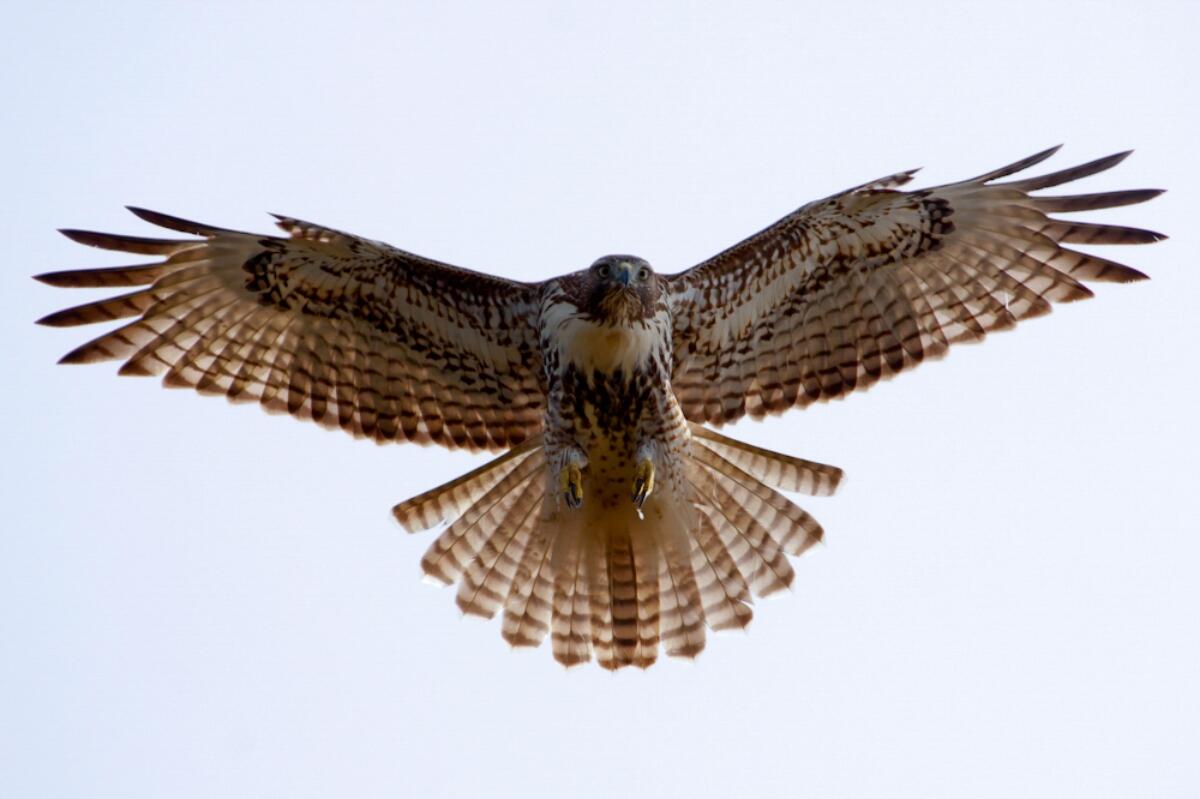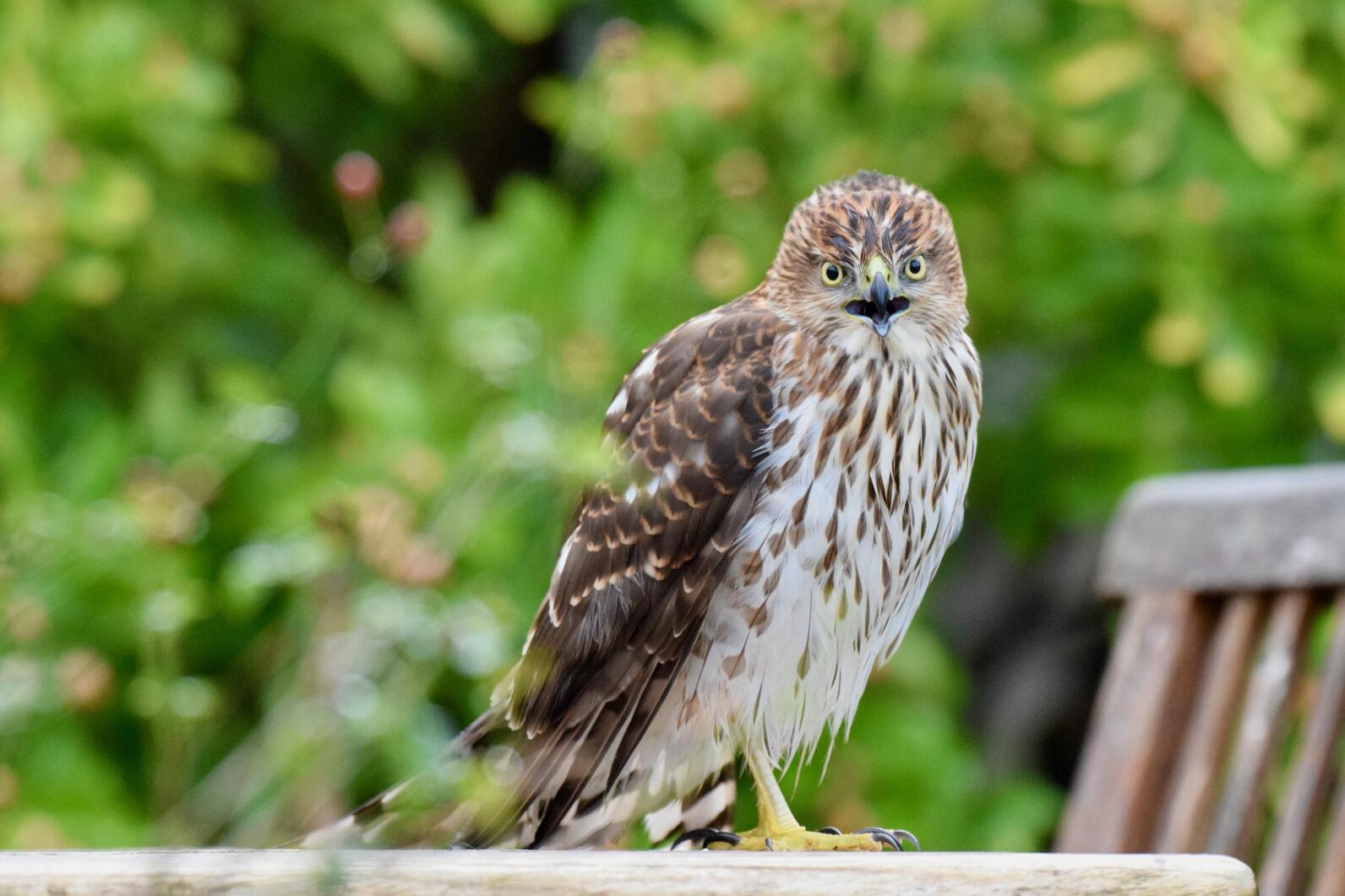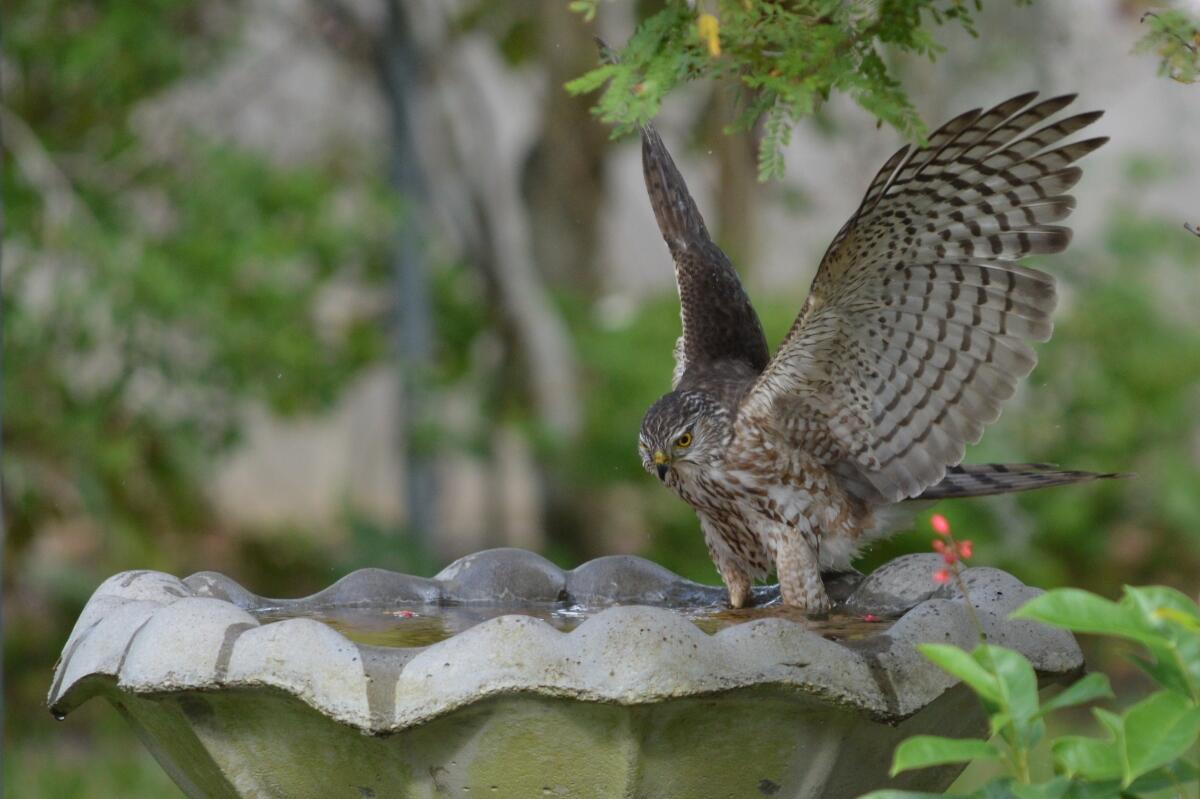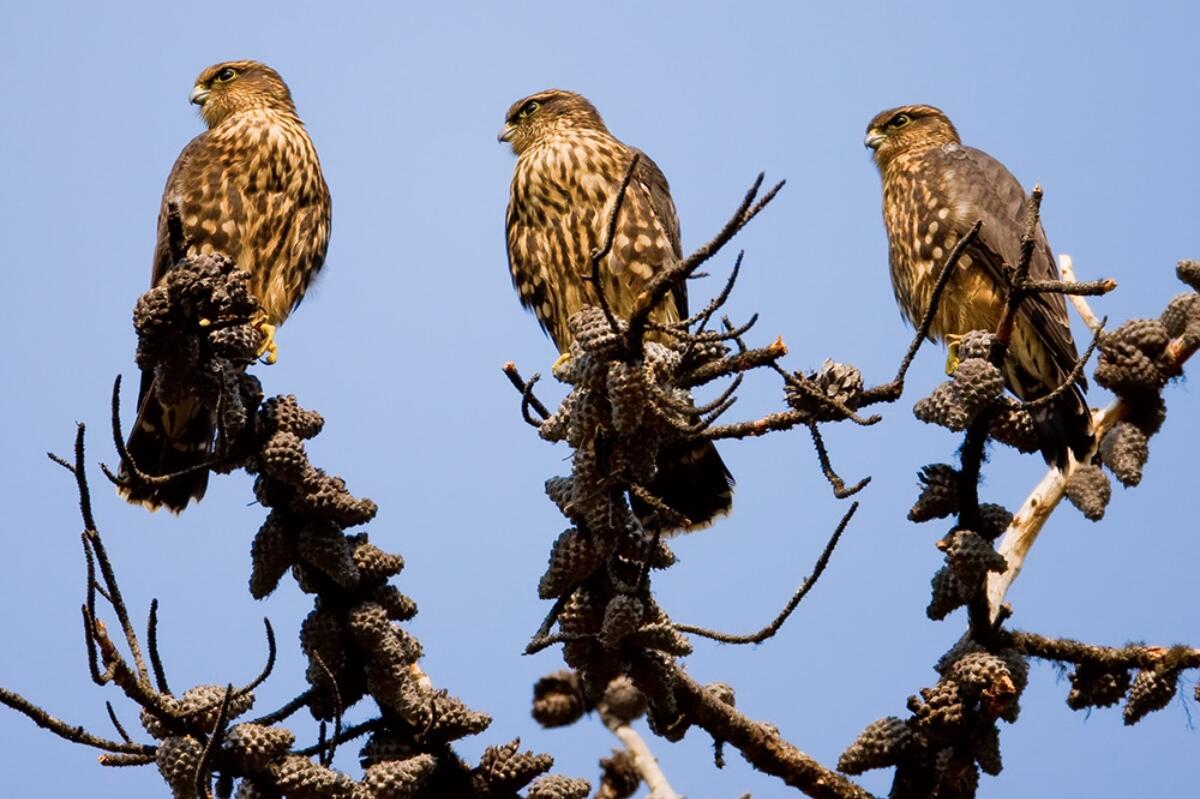(August 26, 2024) Have you noticed any raptors in your neighborhood walking, squawking and flapping their wings awkwardly?
In late summer, Great Lakes raptors have successfully reared their young and the juveniles that hatched earlier this summer are starting to become independent of their parents. This is a big adjustment period for these large, birds.
Much like awkward teens, these young raptors are still figuring out what their bodies are capable of. They are learning how long they can fly and how to use their talons.
Silly Juvenile Raptor Behaviors
For birders, it can be a confusing to identify juvenile hawks, especially since their behavior can be atypical and quite silly!
At this time of year, it is not unusual to encounter a young raptor that is perched on the ground, fence post, tree or rooftop for extended periods of time as it figures out how to rely on its own hunting instincts rather than its parents for food. As these birds hone their skills, you may see them crash land awkwardly or clumsily miss a perch they seemed to be aiming for.
In one instance, a MI Birds team member spotted a young hawk practicing its hunting skills by ungracefully attacking the head of their neighbor’s squirrel statue. It looked around wildly over its shoulder for onlookers, before realizing that the statue was not alive nor edible.
Eventually, their instincts will sharpen along with their talons and these awkward juveniles will flourish as the agile hunters they are meant to be. And just in time, as September marks the peak of raptor migration across the state.
If a juvenile hawk has taken residence in your backyard, you can rest assured that their odd behavior is normal, and they will depart for their wintering grounds in the coming weeks.
We’ve outlined the most common species you are likely to encounter and how to identify them (from largest to smallest):

The most widespread and familiar large hawk in the Great Lakes, the Red-tailed Hawk is bulky, broad-winged and designed for effortless soaring.
ID’ing juveniles: Juveniles tend to be heavily streaked and barred, with a mix of brown and white feathering all over their bodies. Juvenile tails tend to be brown with dark bars.
ID’ing adults: As its name would suggest, adults have reddish tails, which is a definitive characteristic. Adults tend to be dark brown above and pale below with a heavy streaked belly band. Their plumage can be highly variable and there are dark and light morphs.
What they hunt: Primarily small mammals, which it supplements with medium to large birds including Ring-necked Pheasants and European Starlings, and the occasional snake and carrion.

ID’ing juveniles: Juveniles have brown backs and white chests with brown streaking and yellow eyes. Both adults and juveniles have long barred tails, squared heads, and a more rounded tail tip.
ID’ing adults: This medium-sized woodland raptor sports a blue-grey back, dark cap, reddish barring down their chest, and red eyes as adults.
What they hunt: Mainly medium-sized birds including American Robins and European Starlings, which they supplement with small mammals, like mice and voles. Cooper’s Hawks are known to hunt other birds at backyard bird feeders.

ID’ing juveniles: Juveniles are brown above, and have white chests with brown streaking and yellow eyes. The brown streaking of a juvenile Sharp-shinned Hawk may show more blurred lines than the streaking of a young Cooper’s Hawk. Sharp-shinned Hawks will also look small-headed with pencil thin legs and smaller feet than a Cooper’s Hawk. The tails of both the adults and juveniles usually looks more squared off, but can look rounded when spread.
ID’ing adults: This small woodland raptor looks very similar to the Cooper’s Hawk. Adults are blue gray above and pale reddish below with red eyes.
What they hunt: Small birds like American Goldfinches make up 90% of their diet, which they supplement with small mammals and insects. Like the Cooper’s Hawk, Sharp-shinned Hawks are known to hunt small birds at backyard bird feeders.

ID’ing juveniles: Relatively short-tailed, the females and juveniles are brown above and streaked below. Merlins are similar in size and markings to the Sharp-shinned Hawk, but Sharp-shinned Hawks have rounded wing tips (not pointed) and lack white bands on their tail.
ID’ing adults: A small falcon, compact and fast flying, the Merlin joins our common raptors in the Great Lakes during fall migration! Adult males are blue gray above and streaked below, while females look like juveniles.
What they hunt: Small birds, bats, and insects.
If a hawk sets up shop at your bird feeder and you do not want it hunting your backyard visitors, simply take your bird feeders down for two weeks and the hawk should move to a new area in search of food.
This blog is brought to you by the MI Birds program, a public outreach and education program by Audubon Great Lakes and the Michigan DNR. MI Birds aims to bridge the divide and deepen all Michiganders' engagement in the understanding, care and stewardship of public lands that are important for birds and local communities.








